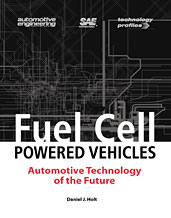Technical Paper
A Comparative Analysis of WHR System in HD Engines Using Conventional Diesel Combustion and Partially-Premixed Combustion
2012-09-24
2012-01-1930
In the truck industry there is a continuous demand to increase the efficiency and to decrease the emissions. To acknowledge both these issues a waste heat recovery system (WHR) is combined with a partially premixed combustion (PPC) engine to deliver an efficient engine system. Over the past decades numerous attempts to increase the thermal efficiency of the diesel engine has been made. One such attempt is the PPC concept that has demonstrated potential for substantially increased thermal efficiency combined with much reduced emission levels. So far most work on increasing engine efficiency has been focused on improving the thermal efficiency of the engine while WHR, which has an excellent potential for another 1-5 % fuel consumption reduction, has not been researched that much yet. In this paper a WHR system using a Rankine cycle has been developed in a modeling environment using IPSEpro.









